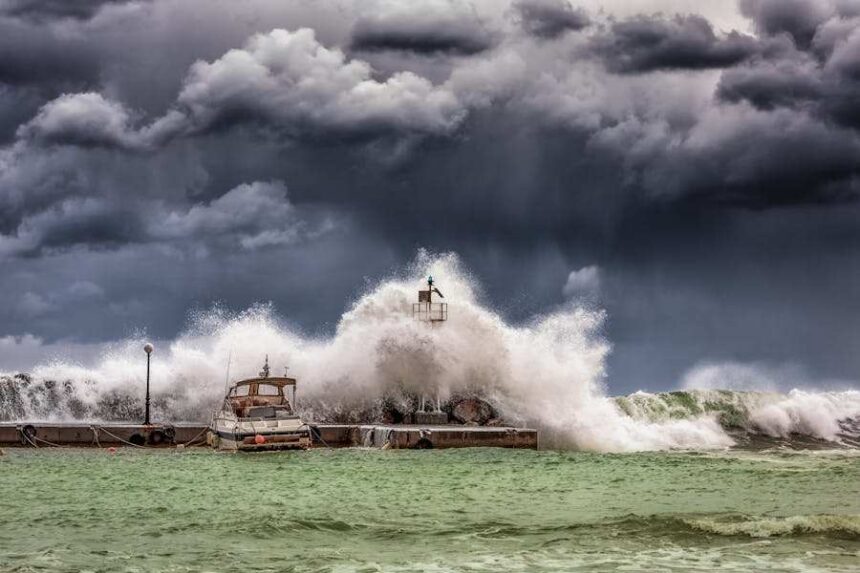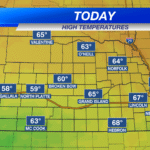Hurricanes, formidable forces of nature, annually threaten the coasts of the United States, bringing destructive winds, torrential rains, and widespread devastation. Understanding the nuances of hurricane season is not just a matter of curiosity but a vital aspect of preparedness and survival for residents and travelers alike. As the USA braces itself for the yearly onslaught, it becomes imperative to grasp the timing, regions affected, and necessary precautions. In this article, we delve into the intricacies of hurricane season in the USA, aiming to equip readers with comprehensive knowledge to navigate this challenging period with confidence and resilience.
When is Hurricane season in USA?
Hurricane season in the USA typically spans from June 1st to November 30th, with the peak activity occurring between August and October. However, it’s essential to note that hurricanes can develop outside of these dates, albeit less frequently. The Atlantic and Gulf coasts are most susceptible to hurricanes during this period, although the Pacific coast and Hawaii also experience their hurricane seasons. Being aware of the timing of hurricane season allows residents and travelers to take necessary precautions and stay informed about potential threats to safety and property.
When Are The Key Dates Of Hurricane Season?
Hurricane season in the USA encompasses key dates that mark the beginning, peak, and end of heightened tropical cyclone activity. It officially commences on June 1st and concludes on November 30th, spanning six months. However, the most active and intense phase typically occurs between mid-August and late October. During this peak period, warm ocean waters and favorable atmospheric conditions create optimal hurricane formation and strengthening conditions.
Start Date (June 1st): The official start of hurricane season signals the beginning of heightened vigilance and preparedness efforts among coastal communities and emergency management agencies. While early-season storms are less common, they can still occur, underscoring the importance of readiness from the onset.
Peak Months (August – October): Mid-August through late October marks the peak of hurricane season, characterized by increased tropical cyclone activity and the highest likelihood of significant hurricanes. Warm sea surface temperatures, reduced wind shear, and favorable atmospheric conditions contribute to the development and intensification of storms during this period.
End Date (November 30th): The conclusion of hurricane season on November 30th signifies a gradual decrease in tropical cyclone activity as ocean temperatures cool and atmospheric conditions become less conducive to storm formation. However, it’s crucial to remain vigilant even as the season winds down, as late-season hurricanes can still pose significant threats to coastal areas.
Understanding Hurricane Categories And Predictions
Understanding hurricane categories and predictions is crucial for residents and authorities alike to prepare for and respond to potential threats posed by these powerful storms.
The Saffir-Simpson Hurricane Wind Scale categorizes hurricanes based on their sustained wind speeds, ranging from Category 1 (74-95 mph) to Category 5 (157 mph or higher). Each category represents increasing levels of potential damage, with Category 5 hurricanes capable of catastrophic destruction.
Hurricane categorization helps assess the potential impact on infrastructure, such as buildings, roads, and utilities, as well as on communities and human lives. Higher-category hurricanes are more likely to cause significant damage, flooding, and power outages, requiring comprehensive preparedness and evacuation plans.
The National Hurricane Center (NHC) provides forecasts and predictions to track hurricanes’ development, movement, and intensity. Utilizing advanced meteorological models and data, the NHC issues advisories, watches, and warnings to alert residents and authorities in potentially affected areas, enabling them to take timely and appropriate action.
Forecasting the track and intensity of hurricanes involves analyzing various meteorological factors, including sea surface temperatures, atmospheric pressure, wind patterns, and the presence of steering currents. Advanced technologies, such as satellites, Doppler radar, and hurricane hunter aircraft, play a crucial role in collecting data and improving prediction accuracy.
While hurricane prediction models have significantly improved over the years, there are inherent uncertainties and limitations associated with forecasting the behavior of these complex atmospheric phenomena. Factors such as rapid intensification, interaction with landmasses, and atmospheric dynamics can influence the trajectory and intensity of hurricanes, posing challenges for accurate predictions.
Preparedness And Safety Measures
Preparedness and safety measures are critical for individuals and communities to minimize the impact of hurricanes and ensure the safety of lives and property. Here are some essential steps to take:
Develop an Emergency Plan:
Create a comprehensive emergency plan for your household or community. Identify evacuation routes, establish meeting points, and designate a communication method in case of separation. Ensure that all family members or residents are familiar with the plan and know what to do during a hurricane.
Assemble an Emergency Kit:
Prepare an emergency kit containing essential supplies, including non-perishable food, water, medications, first aid supplies, flashlights, batteries, and important documents (such as identification, insurance policies, and medical records). Ensure the kit is easily accessible and kept in a secure, waterproof container.
Secure Your Property:
Proactively protect your home or property against hurricane damage. Trim trees and branches, secure outdoor furniture, and remove debris that could become projectiles in high winds. Install storm shutters or board up windows to protect against flying debris and broken glass.
Stay Informed:
Stay informed about hurricane developments and advisories issued by local authorities and the National Hurricane Center (NHC). Monitor weather forecasts, listen to NOAA Weather Radio, and follow updates from reliable sources. Sign up for emergency alerts and notifications to receive timely information about evacuations, shelter locations, and safety instructions.
Evacuation Planning:
Know your evacuation zone and routes in advance. Follow evacuation orders issued by authorities and evacuate promptly if instructed to do so. Have a plan for transporting pets and livestock and make arrangements for accommodations with friends, family, or emergency shelters if necessary.
Protect Personal Safety:
Prioritize personal safety during and after a hurricane. Stay indoors during the storm, away from windows and doors, and seek shelter in a sturdy building or designated safe room. Avoid driving or walking through flooded areas, and be cautious of downed power lines, standing water, and debris when venturing outside after the storm has passed.
Check on Neighbors:
Check on neighbors, especially elderly or vulnerable individuals, to ensure their safety and well-being. Offer assistance and support to those in need and collaborate with community organizations and emergency responders to provide aid and resources to affected areas.
Conclusion
Hurricane season in the USA, from June 1st to November 30th, presents a significant challenge for residents and communities along the Atlantic and Gulf coasts, Pacific coast, and Hawaii. Understanding the timing, regions affected, and the severity of hurricanes is essential for preparedness and response efforts. By staying informed, developing emergency plans, and taking proactive measures to protect lives and property, individuals and communities can mitigate the impact of these powerful storms and enhance their resilience in the face of adversity. As we navigate through each hurricane season, collective vigilance, preparation, and community support remain paramount in safeguarding against the devastating effects of these natural disasters.
FAQ’s
Q: How do hurricanes form during hurricane season in the USA?
A: Hurricanes form over warm ocean waters when atmospheric conditions are conducive to their development, typically during hurricane season. Warm water provides the energy needed for their formation.
Q: What regions of the USA are most affected by hurricane season?
A: Coastal regions along the Atlantic and Gulf coasts are most susceptible to hurricanes during hurricane season in the USA. However, the Pacific coast and Hawaii also experience their hurricane seasons.
Q: How can I prepare for hurricane season in the USA?
A: To prepare for hurricane season, create an emergency plan, assemble an emergency kit, secure your property, stay informed about storm developments, know evacuation routes, and prioritize personal safety.




